-
 Bitcoin
Bitcoin $116900
0.35% -
 Ethereum
Ethereum $3989
3.42% -
 XRP
XRP $3.349
9.04% -
 Tether USDt
Tether USDt $1.000
0.00% -
 BNB
BNB $792.6
2.29% -
 Solana
Solana $177.6
3.36% -
 USDC
USDC $0.9998
0.00% -
 Dogecoin
Dogecoin $0.2256
5.26% -
 TRON
TRON $0.3389
0.04% -
 Cardano
Cardano $0.7954
3.59% -
 Stellar
Stellar $0.4609
10.90% -
 Hyperliquid
Hyperliquid $41.68
6.44% -
 Sui
Sui $3.827
2.12% -
 Chainlink
Chainlink $19.75
9.94% -
 Bitcoin Cash
Bitcoin Cash $581.3
0.54% -
 Hedera
Hedera $0.2636
4.16% -
 Avalanche
Avalanche $23.60
3.69% -
 Ethena USDe
Ethena USDe $1.001
-0.03% -
 Litecoin
Litecoin $122.9
2.37% -
 Toncoin
Toncoin $3.365
1.23% -
 UNUS SED LEO
UNUS SED LEO $8.981
0.31% -
 Shiba Inu
Shiba Inu $0.00001301
2.69% -
 Uniswap
Uniswap $10.68
5.35% -
 Polkadot
Polkadot $3.926
3.70% -
 Dai
Dai $1.000
0.00% -
 Bitget Token
Bitget Token $4.488
2.21% -
 Cronos
Cronos $0.1539
3.99% -
 Monero
Monero $269.7
-1.19% -
 Pepe
Pepe $0.00001124
3.04% -
 Aave
Aave $285.4
3.89%
What is the maintenance margin in crypto futures trading?
In crypto futures trading, maintaining equity above the maintenance margin is crucial to avoid liquidation, especially under high volatility or negative price moves.
Aug 08, 2025 at 06:36 pm
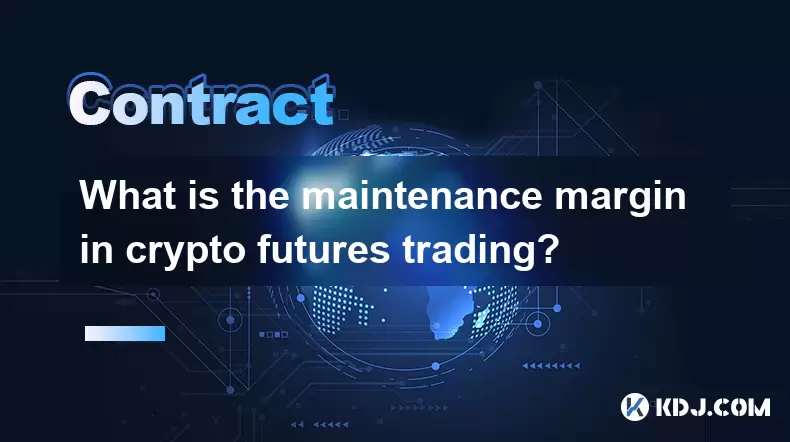
Understanding the Concept of Maintenance Margin
In crypto futures trading, the maintenance margin is a critical threshold that determines the minimum amount of equity a trader must maintain in their margin account to keep their leveraged positions open. Unlike the initial margin, which is the capital required to open a position, the maintenance margin acts as a safety net. If the account balance falls below this level due to adverse price movements, the exchange may issue a margin call or proceed with liquidation. This mechanism protects both the trader and the exchange from excessive losses. For instance, if a trader opens a futures contract with 10x leverage on a platform that sets a 5% maintenance margin, they must ensure their equity does not drop below 5% of the total position value. Falling short of this triggers automated risk management actions.
Differences Between Initial Margin and Maintenance Margin
The initial margin and maintenance margin serve distinct roles in futures trading. The initial margin is the upfront capital required to enter a leveraged position. It is typically a percentage of the total contract value and varies based on the exchange and leverage level. In contrast, the maintenance margin is a lower threshold that must be sustained after the position is active. For example, an exchange might require a 10% initial margin but only a 5% maintenance margin. This means that once the position is open, the trader’s equity can decrease to 5% before action is required. Understanding this distinction helps traders manage risk and avoid unexpected liquidations.
How Maintenance Margin Triggers Liquidation
When a trader’s equity dips below the maintenance margin level, the system initiates liquidation procedures. This process begins with a margin call, although many crypto exchanges skip this step and liquidate immediately due to the volatile nature of digital assets. During liquidation, the exchange automatically closes the position at the current market price to prevent further losses. The formula used to determine this threshold is:
- Equity = Wallet Balance + Unrealized PnL
- Maintenance Requirement = Position Size × Maintenance Margin Rate
If Equity < Maintenance Requirement, liquidation is triggered. For example, a trader holding a $10,000 BTC futures position with a 5% maintenance margin must keep at least $500 in equity. If losses reduce equity to $490, the system will close the position.
Calculating Maintenance Margin: A Step-by-Step Guide
To calculate the maintenance margin and understand your risk exposure, follow these steps:
- Determine the total position value by multiplying the contract size by the current market price.
- Identify the maintenance margin rate specified by your exchange (e.g., 5%).
- Multiply the position value by the maintenance margin rate to get the required maintenance margin.
- Monitor your account equity, which includes your wallet balance and unrealized gains or losses.
- Compare equity to the required maintenance margin to assess liquidation risk.
For example, if you hold 1 BTC futures contract priced at $60,000 and the maintenance margin rate is 4%, the required maintenance margin is $2,400. If your account equity falls below this amount, liquidation becomes imminent.
Strategies to Avoid Falling Below Maintenance Margin
To prevent breaching the maintenance margin, traders can adopt several proactive measures:
- Use lower leverage to reduce exposure and increase buffer against price swings.
- Set stop-loss orders to limit losses before they erode equity significantly.
- Monitor positions actively, especially during high-volatility periods such as major news events.
- Deposit additional funds into the margin account when equity approaches the maintenance threshold.
- Diversify positions across different assets to avoid over-concentration in a single volatile market.
Some exchanges offer auto-deposit features that add funds from a linked wallet when equity nears the maintenance margin, helping avoid liquidation.
Exchange-Specific Maintenance Margin Policies
Different crypto derivatives platforms apply varying maintenance margin rules. For example:
- Binance Futures uses a tiered system where maintenance margin rates decrease as position size increases, but larger positions face higher risk bands.
- Bybit displays a "Maintenance Margin" field in the position panel, allowing traders to view the exact amount needed to avoid liquidation.
- OKX provides a risk limit system where maintenance margin is tied to specific tiers, and users can adjust their risk level.
- Deribit applies fixed maintenance margin percentages based on contract type and size.
Traders must review the margin policy of their chosen platform and understand how it impacts their positions. These policies are usually found in the “Futures Guide” or “Risk Management” section of the exchange’s help center.
Impact of Funding Rates on Maintenance Margin
While funding rates do not directly alter the maintenance margin requirement, they influence account equity over time. In perpetual futures contracts, traders pay or receive funding every 8 hours based on the rate. If you hold a long position and funding rates are positive, you pay fees, which gradually reduce your equity. This erosion can bring your balance closer to the maintenance margin threshold. Conversely, receiving funding can help maintain equity. Therefore, traders must factor in recurring funding costs when assessing their risk of liquidation.
Frequently Asked Questions
What happens if my equity is exactly equal to the maintenance margin?
If your equity equals the maintenance margin, your position remains open, but there is no buffer for further losses. Any additional negative price movement will push equity below the threshold, triggering liquidation. Most systems act immediately when equity falls below or equals the required level, depending on the exchange’s implementation.
Can I add funds after receiving a margin call?
Yes, most exchanges allow you to add margin (also called "margin top-up") to prevent liquidation. If you deposit funds before the system closes your position, the added capital increases your equity and may bring it back above the maintenance margin. However, due to the speed of crypto markets, delays in depositing can result in completed liquidation before the funds arrive.
Is maintenance margin the same for long and short positions?
Yes, the maintenance margin rate is typically identical for both long and short positions on the same contract. The calculation depends on position size and market price, not direction. However, liquidation prices differ: longs liquidate when price drops too low, while shorts liquidate when price rises too high.
Do isolated and cross margin modes affect maintenance margin differently?
Yes. In isolated margin mode, the maintenance margin is calculated based only on the margin allocated to that specific position. In cross margin mode, the entire account balance contributes to equity, which may help sustain the position longer. However, if the total equity falls below the maintenance requirement, liquidation still occurs, potentially affecting multiple positions in cross mode.
Disclaimer:info@kdj.com
The information provided is not trading advice. kdj.com does not assume any responsibility for any investments made based on the information provided in this article. Cryptocurrencies are highly volatile and it is highly recommended that you invest with caution after thorough research!
If you believe that the content used on this website infringes your copyright, please contact us immediately (info@kdj.com) and we will delete it promptly.
- PENDLE Price Pumping: Is This Cryptocurrency's Momentum Sustainable?
- 2025-08-08 20:50:11
- BlockchainFX (BFX): The Crypto Presale Shaking Up the Scene in 2025
- 2025-08-08 21:10:15
- GMO Miner, Bitcoin, and XRP Mining: A New Era of Passive Income?
- 2025-08-08 21:10:15
- Web3 Antivirus, Token Validation, Wallets & Exchanges: Staying Safe in DeFi
- 2025-08-08 21:16:08
- BlockchainFX, TRON, Aave: Navigating the Crypto Landscape in 2025
- 2025-08-08 21:16:08
- World Liberty Financial's USD1 Loyalty Program & HTX: A New Era for Stablecoins?
- 2025-08-08 21:20:12
Related knowledge

What is the distinction between mark price and last price on KuCoin?
Aug 08,2025 at 01:58pm
Understanding the Basics of Price in Cryptocurrency TradingIn cryptocurrency exchanges like KuCoin, two key price indicators frequently appear on trad...

What are the specific maker and taker fees on KuCoin Futures?
Aug 08,2025 at 08:28am
Understanding Maker and Taker Fees on KuCoin FuturesWhen trading on KuCoin Futures, users encounter two primary types of fees: maker fees and taker fe...
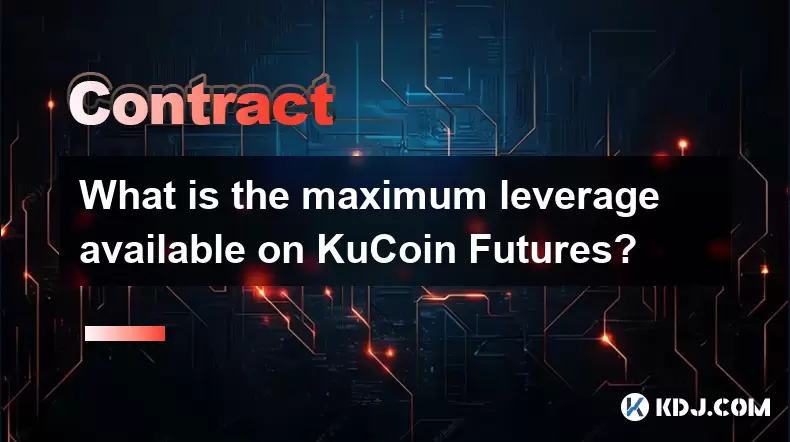
What is the maximum leverage available on KuCoin Futures?
Aug 08,2025 at 10:21am
Understanding Leverage in KuCoin Futures TradingLeverage in KuCoin Futures allows traders to control a larger position size using a smaller amount of ...
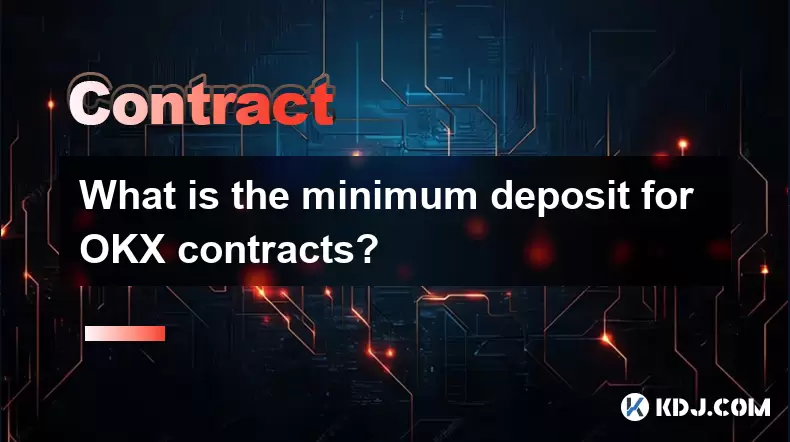
What is the minimum deposit for OKX contracts?
Aug 08,2025 at 07:00am
Understanding OKX Contract Trading BasicsOKX is one of the leading cryptocurrency derivatives exchanges, offering a wide range of perpetual and future...
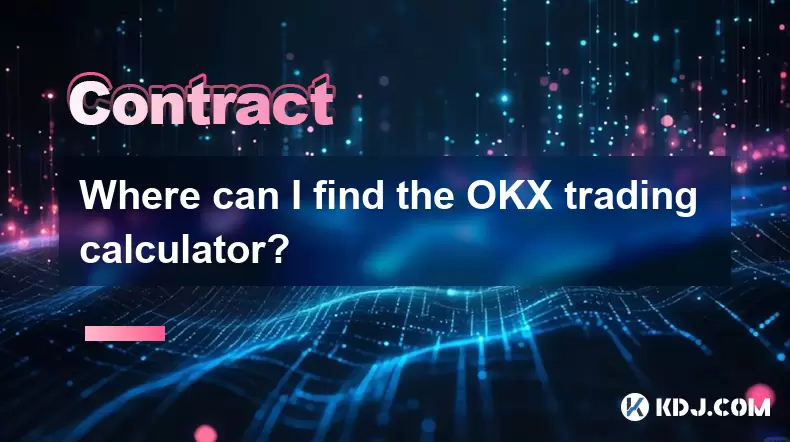
Where can I find the OKX trading calculator?
Aug 08,2025 at 07:49am
Understanding the OKX Trading Calculator FunctionalityThe OKX trading calculator is a powerful analytical tool designed to assist traders in estimatin...
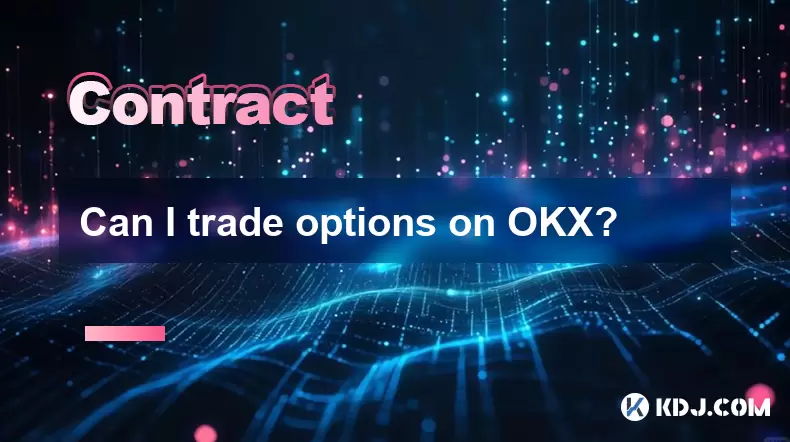
Can I trade options on OKX?
Aug 08,2025 at 11:01am
Understanding Options Trading on OKXYes, you can trade options on OKX. OKX is one of the leading cryptocurrency derivatives exchanges that offers a de...

What is the distinction between mark price and last price on KuCoin?
Aug 08,2025 at 01:58pm
Understanding the Basics of Price in Cryptocurrency TradingIn cryptocurrency exchanges like KuCoin, two key price indicators frequently appear on trad...

What are the specific maker and taker fees on KuCoin Futures?
Aug 08,2025 at 08:28am
Understanding Maker and Taker Fees on KuCoin FuturesWhen trading on KuCoin Futures, users encounter two primary types of fees: maker fees and taker fe...

What is the maximum leverage available on KuCoin Futures?
Aug 08,2025 at 10:21am
Understanding Leverage in KuCoin Futures TradingLeverage in KuCoin Futures allows traders to control a larger position size using a smaller amount of ...

What is the minimum deposit for OKX contracts?
Aug 08,2025 at 07:00am
Understanding OKX Contract Trading BasicsOKX is one of the leading cryptocurrency derivatives exchanges, offering a wide range of perpetual and future...

Where can I find the OKX trading calculator?
Aug 08,2025 at 07:49am
Understanding the OKX Trading Calculator FunctionalityThe OKX trading calculator is a powerful analytical tool designed to assist traders in estimatin...

Can I trade options on OKX?
Aug 08,2025 at 11:01am
Understanding Options Trading on OKXYes, you can trade options on OKX. OKX is one of the leading cryptocurrency derivatives exchanges that offers a de...
See all articles

























































































